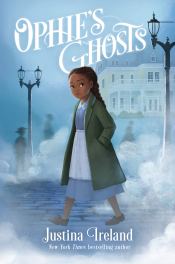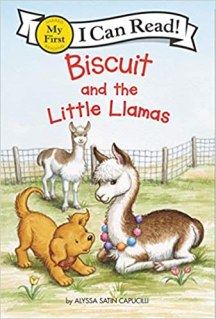 Ophie’s Ghosts by Justina Ireland, 2021
Ophie’s Ghosts by Justina Ireland, 2021
Recommended for grades 4-8; ghost story, historical fiction
Brief Review:
It’s 1922 and twelve-year-old Ophelia Harrison (otherwise known as Ophie) has just lost her father in a lynching. Since this traumatic event, Ophie has begun seeing ghosts. She and her mother move to Pittsburgh and start working as servants for rich, grumpy Mrs. Caruthers and her son Richard. Ophie quickly befriends Clara, a beautiful and sophisticated ghost who had been the previous maid. Ophie’s great aunt Rose warns her that ghosts are dangerous and that she shouldn’t interact with them, but Ophie has decided that it’s her responsibility to help ghosts pass on. She especially wants to help Clara, not only because of their bond, but also because she realizes that Clara has been murdered due to a forbidden romance. But she underestimates just how powerful and dangerous Clara really is. Although this book is somewhat less scary than some middle-grade ghost stories, such as those by Mary Downing Hahn and Dan Poblocki, it will have a strong appeal for any middle-grade readers with an affinity for suspenseful, spooky stories. Other appeal factors include the vivid, atmospheric description of the historical Pittsburgh setting, the focus on African American history, and Ophelia’s likable personality. Recommended for most readers within the middle-grade age range and all fans of the historical ghost story sub-genre.
Long Review:
It’s 1922 and twelve-year-old Ophelia Harrison’s life has completely changed. After her father is lynched and their home Georgia is burned, Ophelia (otherwise known as Ophie) and her mother move in with relatives in Pittsburgh. They’re trying to save up enough money to get their own place, which means that Ophie has to quit school and go to work. She and her mother are household servants at Daffodil Manor. Ophie’s job is to wait on elderly Mrs. Caruthers, who is irritable, demanding, and racist. Although the house has a long history, she and her son Richard are the only current residents other than hired help and ghosts.
Ever since her father’s sudden death, Ophie can see ghosts. She encounters them in the streets, on the trolley going to work, and even right outside of her family’s own home, but she’s never tried to communicate with them or gotten to know any of them until she arrives at Daffodil Manor. There, she meets a variety of ghosts including a colored boy named Colin and a beautiful young lady named Clara. (Although it will be immediately clear to most readers, Ophie doesn’t initially realize that Clara is a ghost and assumes she’s there visiting Richard) Although Clara is well-dressed and sophisticated, Ophie learns that she had also been a maid until she suddenly disappeared. The other household staff are puzzled by Ophie’s questions and tell her that Clara left suddenly and they don’t know exactly why.
Ophie later learns from her great aunt Rose that many of the women in her family can see “haints”. Aunt Rose warns Ophie that ghosts are very dangerous and that she should ignore them. She also promises that she and another relative will someday give Ophie more information and instructions about how to communicate with ghosts and protect herself from them. But Ophie has come to the conclusion that it’s her job to help the ghosts pass on. In particular, she is determined to help Clara. Not only is she especially fond of Clara, but she’s convinced that Clara was murdered. Inspired by romance stories and detective stories she’s read in magazines, Ophie decides to solve Clara’s tragic mystery. Although Ophie is correct that Clara was brutally murdered due to a forbidden romance, she doesn’t realize just how much power Clara has and how she intends to use it.
Although this book is somewhat less scary than some middle-grade ghost stories, such as those by Mary Downing Hahn and Dan Poblocki, it will have a strong appeal for any middle-grade readers with an affinity for suspenseful, spooky stories. The ghostly vibe is bolstered by occasional interludes from the perspective of non-human “characters”, such as the house or the trolley car. Besides that appeal factor, this book also has significant literary and educational value as a work of historical fiction. The time period is one that tends to be underrepresented in children’s literature, and the historical Pittsburgh setting is described in vivid, atmospheric detail. Besides that, there’s a strong focus on African American history, including references to slavery and the Civil War in addition to the racial and social circumstances that Ophie experiences first-hand. Skillful writing and likable characters tie all these other positive factors together into an engaging and appealing story that is well worth recommending to most readers within the middle-grade age range.
 The Fabulous Tale of Fish & Chips
The Fabulous Tale of Fish & Chips  Biscuit and the Little Llamas
Biscuit and the Little Llamas  Milo Imagines the World
Milo Imagines the World  Off to See the Sea
Off to See the Sea  The Rock from the Sky
The Rock from the Sky  Trinity for Tots
Trinity for Tots  I See God in Everything
I See God in Everything  Franz- Ferdinand the Dancing Walrus
Franz- Ferdinand the Dancing Walrus